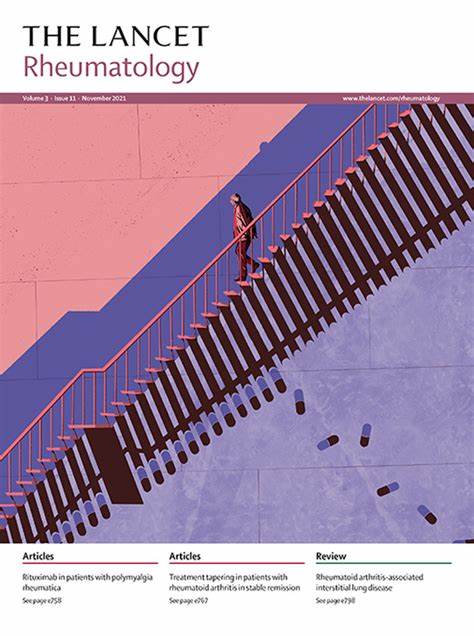The imaging crisis in axial spondyloarthritis
IF 16.4
1区 医学
Q1 RHEUMATOLOGY
引用次数: 0
Abstract
Imaging holds a pivotal yet contentious role in the early diagnosis of axial spondyloarthritis. Although MRI has enhanced our ability to detect early inflammatory changes, particularly bone marrow oedema in the sacroiliac joints, the poor specificity of this finding introduces a substantial risk of overdiagnosis. The well intentioned push by rheumatologists towards earlier intervention could inadvertently lead to the misclassification of mechanical or degenerative conditions (eg, osteitis condensans ilii) as inflammatory disease, especially in the absence of structural lesions. Diagnostic uncertainty is further fuelled by anatomical variability, sex differences, and suboptimal imaging protocols. Current strategies—such as quantifying bone marrow oedema and analysing its distribution patterns, and integrating clinical and laboratory data—offer partial guidance for avoiding overdiagnosis but fall short of resolving the core diagnostic dilemma. Emerging imaging technologies, including high-resolution sequences, quantitative MRI, radiomics, and artificial intelligence, could improve diagnostic precision, but these tools remain exploratory. This Viewpoint underscores the need for a shift in imaging approaches, recognising that although timely diagnosis and treatment is essential to prevent long-term structural damage, robust and reliable imaging criteria are also needed. Without such advances, the imaging field risks repeating past missteps seen in other rheumatological conditions.
轴型脊柱性关节炎的影像学危机。
影像学在轴性脊柱炎的早期诊断中起着关键但有争议的作用。尽管MRI增强了我们发现早期炎症变化的能力,特别是骶髂关节骨髓水肿,但这种发现的特异性较差,带来了过度诊断的重大风险。风湿病学家对早期干预的善意推动可能无意中导致将机械性或退行性疾病(例如,髂骨性凝结性骨炎)错误分类为炎症性疾病,特别是在没有结构性病变的情况下。解剖差异、性别差异和次优成像方案进一步加剧了诊断的不确定性。目前的策略,如量化骨髓水肿并分析其分布模式,以及整合临床和实验室数据,为避免过度诊断提供了部分指导,但未能解决核心诊断困境。包括高分辨率序列、定量MRI、放射组学和人工智能在内的新兴成像技术可以提高诊断精度,但这些工具仍处于探索阶段。这一观点强调了改变成像方法的必要性,认识到尽管及时诊断和治疗对于防止长期结构损伤至关重要,但也需要强有力和可靠的成像标准。如果没有这样的进展,成像领域可能会重复过去在其他风湿病疾病中出现的失误。
本文章由计算机程序翻译,如有差异,请以英文原文为准。
求助全文
约1分钟内获得全文
求助全文
来源期刊

Lancet Rheumatology
RHEUMATOLOGY-
CiteScore
34.70
自引率
3.10%
发文量
279
期刊介绍:
The Lancet Rheumatology, an independent journal, is dedicated to publishing content relevant to rheumatology specialists worldwide. It focuses on studies that advance clinical practice, challenge existing norms, and advocate for changes in health policy. The journal covers clinical research, particularly clinical trials, expert reviews, and thought-provoking commentary on the diagnosis, classification, management, and prevention of rheumatic diseases, including arthritis, musculoskeletal disorders, connective tissue diseases, and immune system disorders. Additionally, it publishes high-quality translational studies supported by robust clinical data, prioritizing those that identify potential new therapeutic targets, advance precision medicine efforts, or directly contribute to future clinical trials.
With its strong clinical orientation, The Lancet Rheumatology serves as an independent voice for the rheumatology community, advocating strongly for the enhancement of patients' lives affected by rheumatic diseases worldwide.
 求助内容:
求助内容: 应助结果提醒方式:
应助结果提醒方式:


